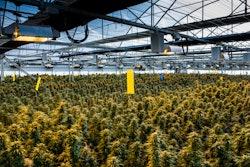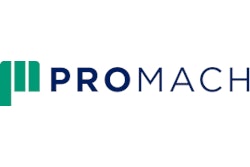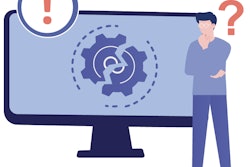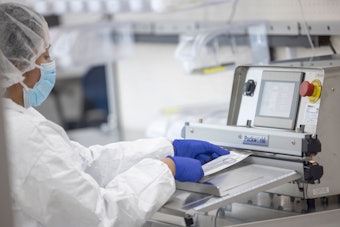In November, during the PACK EXPO Connects Jumpstart program, Jan Tharp, President and CEO of The Bumble Bee Seafood Co., discussed how she has been able to lead the company through a corporate crisis and COVID-19. Recently, Tharp joined OEM Editor-in-Chief Stephanie Neil on the PMMI UnPACKed podcast to continue the conversation.
Stephanie Neil: The Harvard Business Review (HBR) published an article stating that women are better leaders than men during a crisis. Jan, thinking about your own journey leading the company through a corporate scandal and now COVID-19, what leadership skills have you leaned on to engage your team?
Jan Tharp: I think when you look back over our 28 months and you consider everything this business has been through, to your point, we’ve gone through a corporate scandal, we’ve gone through a bankruptcy, we’ve sold the company. And then, when we sold the company, we entered into COVID-19. So when I look at it, I would say in some ways, COVID-19 has been maybe less traumatizing to the business than some of those other earlier issues, because at least with COVID-19, everyone on the planet was dealing with the ramifications of that. Our earlier issues were really specific to our business and our team, but there still were similarities. With the issues of the past, we certainly had financial and emotional concerns that we had to deal with caused by the scandal and the bankruptcy. COVID-19 brought those same concerns, the financial concerns and the emotional concerns, but this time it layered on health concerns. I think that the tools and the skills that we developed and all of the things that helped us through those earlier issues, they are the same tools that we use to manage through COVID-19 and it really came down to heightened communication and transparency. I think being very open with our team members as to what’s going on, and then finally balancing the realism with optimism. So not trying to hide the fact that a situation was difficult, being pretty open about it, but being optimistic about where we’re headed.
Stephanie Neil: The HBR study said that women express more awareness of fears and concern for wellbeing and confidence in their plans. Do you feel the communication strategy that you put into place helped transition the company through a crisis and COVID-19?
Jan Tharp: I think leadership is a skill. It’s something that you develop over time. I don’t know that it’s necessarily gender specific. I think it’s a skill that anyone can have if they want it and they want to spend time developing it. I will also say though, that women tend to be a little more empathetic and perhaps, and this isn’t a broad brush statement, but perhaps their listening skills may be better. So to your point, when we were in any one of the situations that we were in, one of the leadership skills that I will say I continue to develop, because it’s something that we’re learning every day, is that listening skill. Listening to our team members, what’s on their mind, where are their concerns, how do we address those concerns? Because everybody’s are going to be different depending on where they sit in the organization. I think one of the ways we’ve been able to do that was just starting at the foundational level of reinforcing our values. We developed our values a couple of years ago and continuing to live those values and talk about those values, ground us in something that is common to everyone. If you can continue to show the team how what they’re doing every single day is getting us one step closer to living our purpose, then that makes all the difference in the world. It sounds simple, but at the end of the day, communicating and having that feedback is what gets you through any kind of crisis or a business challenge.
Stephanie Neil: Let’s move on to the seafood industry. How has the pandemic impacted the general industry?
Jan Tharp: In general, I would say it’s been positive for the industry as a whole. What I would also say is there’s a lot of fertile ground for sustained growth. The reason I say that is if you look at some of the trends that we’re seeing, the macro consumer trends and how they relate back to our industry, I think you’ll see why I’m optimistic. The first one being eating at home. I don’t think that’s going away. I think that’s certainly good for retail grocery. It’s not so good for food service, but I think that we are going to be eating more at home for the foreseeable future. Again, great for retail grocery and ultimately great for seafood. If you look at the economy, I think the economic conditions in the U.S., in my opinion, are going to push families into two extremes. One being wealth generation, and there’s people that are going to be pushed into further economic insecurity A challenged economy generally is good for people who are operating in center store grocery. E-commerce is another one. It’s going to continue to grow. Whether you’re buying your products through your local retailer on their website or Amazon or any of the abilities to do curbside pickup, home delivery, it doesn’t matter. If you look at it from our perspective, digital is actually good. It gives us an opportunity to connect with our consumer at a much deeper level than we can if a consumer is walking down center store grocery, and they’re spending two seconds looking at shelf stable seafood and deciding what they’re going to buy. So the engagement, actually, with e-commerce utilized correctly could be significantly better.
I mentioned people spending less time in the grocery stores. People are not going to the store as often, [but] they’re buying more. So that’s good for maybe larger formats. That’s good for multi-packs, ready-to-eat items, maybe some value-added items, but figuring out what products fit now in this changing retail landscape becomes important. Then finally for our industry, protein. Protein was on trend before the pandemic. It’s still growing. So as I look at those macro trends and how they relate back to the seafood sector, I’m extremely optimistic about our industry growth. We’re seeing it in the numbers. In general, the industry’s up in shelf stable about 17% and frozen seafood’s up about 30% to 35%. So all positive signs for the industry.
Stephanie Neil: The industry in general is up, but you still have to capture your market share. How do you make Bumble Bee Seafood the tuna of choice when somebody is walking down the grocery aisle or shopping online?
Jan Tharp: It’s essentially how do you de-commoditize something that could be viewed as a commodity. So the question is really, what’s your reason for being? What is it that Bumble Bee has that others don’t have? If you look at our shelf stable products, where we excel is in albacore, so it’s a premium product. We’ve looked at the consumer trends. As you may have noticed on the shelf, we’ve changed our packaging, trying to [appeal] a little bit more to today’s shopper. Convenience is key. Whether you’re talking about a pouch or ready-to-eat, or what we call value-added and value-added just means that there’s been a flavor or some enhancement to our products already put in there. So as we listen to our consumer, which we’re doing a lot more of, and that’s manifesting itself in the products that we are putting out into the marketplace. And when we talk about thinking about seafood differently, one of the things that Bumble Bee has done in the last year is we’ve partnered with a plant-based seafood company by the name of Good Catch. We were the first ones to enter into a distribution agreement with a plant-based seafood company. Again, I look at that as very complementary and a demonstration that we are thinking about the category differently and meeting the diverse consumer needs.
Stephanie Neil: Were there some lessons learned over the last year that will influence the way the company conducts business in the future?
Jan Tharp: I think that every business on the planet is probably doing a bit of self-reflection in early 2021 on what happened in 2020. Speaking for our industry, we have a very global industry. I would say that we are extremely adept at managing episodic supply chain interruptions, but this one was very different because it was the entire globe at the same time. So it challenged everybody to keep up with demand. So when you talk about what are we going to do differently, I think the word flexibility certainly comes to mind right away. Flexibility in operations. How do you ramp up and ramp down? You need to be able to do both, almost like an accordion. We would have been looked at like we were crazy if in 2018 or before the pandemic in ‘19, if we said, “Oh, well, let’s put in another line, even though we don’t have sales for that line.” People just generally don’t do that. But with the influx of demand, we found ourselves having to make production changes, meaning it was whichever products could run the fastest and most efficient are the ones that we actually focused on. Labor was an issue in manufacturing well before the pandemic and the pandemic just made it even worse, even though COVID-19 has displaced all these service industry workers, and created on the opposite side, on the manufacturing side, this tremendous need for labor, we still are experiencing labor shortages and trying to fill a void because of the impacts of COVID-19. So we’ve had to rethink that.
I think obviously, being in seafood, we do understand that the world is interconnected, but we keep seeing examples of it. So you look at what’s going on in logistics today, specifically ocean freight. I mean, ocean freights are up over 200%. It’s because it is a global industry and everyone is fighting for containers as consumers [want] for more products versus services. It is something that the industry has to work through. Risk mitigation becomes huge in areas that were sole sourced, whether that was packaging or raw material. I would say a positive of COVID-19, as we reflect back, is we have onboarded over 20 individuals in the last year. What’s different now is these individuals are not necessarily based in San Diego where we are headquartered. We have been able to break down the barriers of physical location. You can be anywhere as long as you’ve got a computer and access to data. So we have found that from an HR perspective, we have been able to attract talent that isn’t San Diego based and almost seamlessly move them into our organization because we’re essentially virtual. So that’s been something that we’ve learned as a business. It’s actually, I think, a positive.
Stephanie Neil: Let’s talk about partnerships, in particular machine builders. What can OEMs do to help companies like Bumble Bee in the future? Are there things that they can start thinking about and implementing?
Jan Tharp: Yeah, I think as I look at the OEMs and you look at some of the changes that are going on in the food sector right now, I think the OEMs are sitting in a great spot for growth. Again, you look at some of the trends that we talked about earlier. They’re going to impact everybody in this category. I mentioned grocery. Well, grocery is going to change forever in my mind. We aren’t going back to pre-COVID-19 situations where you’ve got self-service salad bars and people grabbing food in a community way. That, to me, is gone. So you need more pre-packaged goods. We talked earlier about e-commerce and e-commerce is going to continue to grow. Labor is going to continue to be a challenge. I think lastly, food safety is going to be on the top of consumer’s minds for a long, long time. So what does that mean to OEMs and food processors? It means packaging and it means different packaging formats. Everybody is looking at how do we get our products into different formats that will be more useful for e-commerce, that is, how do you pre-package something without it being a sustainability nightmare? How does automation come in to the workforce in an affordable way so that we can reduce our reliance on labor, keeping in mind some parameters around physical distancing and so forth. How does that change the way equipment is built? Finally, what changes will we see coming down the pike in food safety? All of those packaging changes have ramifications and needs that will be put on the OEMs as we move forward. I think it’s fantastic for them, as far as working with industry to find ways to meet these needs.
And in a perfect world, we would be able to reduce the lead time. Lead times sometimes were challenging before COVID-19. Now I’m sure that OEMs are having the exact same issues we are with raw material and labor. Flexibility in design. I mean, the time it takes you to figure out what package you want, go out and do a bid, you get the equipment in, do your factory acceptance test. In today’s world, you could have marketing come back and say, “Oh yeah, that was last month’s design. Now we want something totally different.” So how do you adjust your manufacturing—which takes a long time—to the changing needs that are in marketing?
Stephanie Neil: Bumble Bee has won a lot of awards recently. One of the latest being the Natural, Organic, Sustainable, and Healthy Products, NOSH, best of awards, in the category of new packaging. What does this packaging award say about the direction of Bumble Bee?
Jan Tharp: First of all, I can’t let the opportunity go to say, obviously we’re winning these awards because we have a fantastic team. I’m honored to be able to lead them. We have three strategic pillars of people, product, and planet. I think if we focus in on the product side, listening to the consumer, making sure that our products are resonating with them and hitting on that protein trend, elevating and amplifying protein as a snack, a meal, a convenience occasion, there’s so much there. I’d say lastly, celebrating the ocean. I don’t know that we do enough of that. I mean, the ocean is just such a magnificent resource. So it’s a matter of how do you protect it and highlight it and nurture the ocean and celebrate all that comes from it? I think that’s where we got such a unique opportunity at Bumble Bee. We’ve been historically, for 120 years, focused in on tuna. Tuna is a fantastic protein, but when you think of the diversity in the ocean and all of the food products that could come out of the ocean, to me, that’s just a huge innovation opportunity.
To listen to the full conversation on the UnPACKed podcast, visit: oemgo.to/jantharp






















